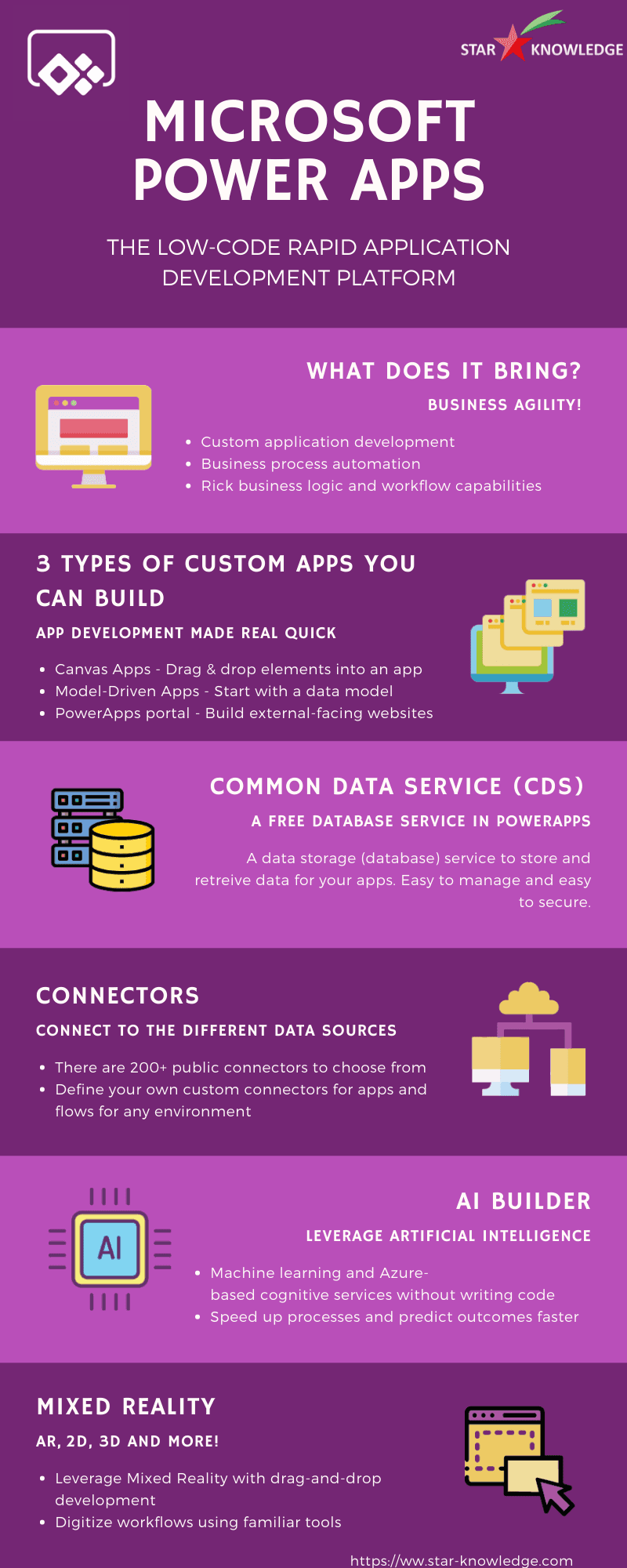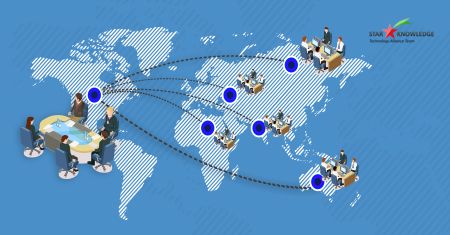09 Jun Microsoft Power Apps: Everything You Need to Know
09 JUN 2020

Now, what is Power Apps?
Microsoft Power Apps is fundamentally a Platform as a Service (PaaS) that has entirely transformed the way developers build applications today. It is a low code application development platform for mobile and web apps to provide developers – regardless of their technical expertise – a way to quickly build business applications eliminating the need for the overall amount of coding required.
In simple words – Any employee/staff with little to no technical skills can now build custom business solutions apps in a matter of few days.

The Incredible Features of PowerApps
- Build custom apps without coding
- Easily integrates with other Microsoft Solutions
- Securely store, manage, and retrieve data into apps with Common Data Service (CDS)
- Leverages Artificial Intelligence (AI)
- Mixed Reality (AR, VR) apps within days
- Highly user-friendly interface
- Cost-effective
- Easy to connect to cloud services like Dropbox, SQL, Google Drive, etc.
The Business Benefits of Power Apps
- Rapid software development
Microsoft PowerApps helps businesses speed up application development and empowers developers even with no technical expertise to develop custom apps and automate workflows. Mobile App Development Companies can now build high-functioning mobile apps in a matter of a few days that seamlessly work on any operating system and framework. Power Apps replaces time-consuming elements such as coding, UI, etc., with the drag-and-drop interface which eases the creation of fields, features, and functions.
- Cost of development
According to research conducted by Forrester, with Power Apps and Flow (Power Automate), the average cost of application development is 70% lesser. The traditional application development process involves the use of several development tools, high developer skills, big-budget, and time due to benefits like no code maintenance, no application management, no professional service fees, etc.
- Process automation
One of the key roles Power Apps performs is process and workflow automation. Using PowerApps and Flow you can automate almost any business process both simple and complex. With PowerApps you can create apps for simple to complex functions and with Power Automate you can automate simple to complex manual tasks most common use cases involve document approval process automation, updating key business policies, adding document metadata, creating custom forms etc.
- Huge Savings
Business users of Power Apps estimate escalating savings of millions of dollars in the first three years of its adoption. According to Forrester, factors contributing to these huge savings are reduced IT efforts, streamlines business processes, replacing existing third-party applications that have high maintenance and license costs, and significant return on investments.
Power Apps and the Power Platform
Microsoft Power BI, Power Automate (Flow), and Power Apps together form the Power Platform. These three services provide a whole arena of tools to manage our digital workplace. Get deep business insights, automate workflows, and build rapid custom apps keeping data at the center. The roles these three perform are as follows:
- Power BI – The business intelligence platform to find, gather, and analyze insights within an organization’s data.
- Power Automate (Flow) – Flow is all about automated workflows. It is a trigger-based system that automates notifications, alerts, communication, data gathering, etc.
- Power Apps – Act, modify data and build custom business apps without the need for writing codes.
How to Build an App on Power Apps?
The best part about PowerApps is that building an app is incredibly easy. You can build an app in no time following the below steps:- Select a pre-built template inside Power Apps
- Connect to your data source and import the desired data into the app
- Drag and drop desired fields, forms, screens, videos, images, choice fields, etc. to create the app and functionalities it should perform
- Once done, hit “Publish” and “Share” buttons to complete the app and share it with anyone
When to use Power Apps – The Use Cases
- Automate simple repeatable, frequent tasks
- Integrate data sources and other digital workplace solutions like SharePoint, Outlook etc.
- Create a Power App for SharePoint lists within SharePoint Online
- Build your own apps to improve operations, productivity and boost agility
- You want to make the most of Office 365 environment
- You want to build quick solutions and apps to improve processes even without programming skills
So, what is it that you or your business wants to achieve with Microsoft Power Apps? Build your own custom apps or contact a Microsoft Partner who provides tailored Power Apps consulting and development services like Star Knowledge.
Our Related Posts
Microsoft Power Apps: Custom HR Appraisal Application
The client was conducting the crucial HR Appraisal process using complex……..
How Hiring a Remote Team Drives Tremendous Business Growth
The client is a reputed oilfield service company in the USA engaged in…….
Power Apps – Entrepreneurial Grading App for a School
The client as a School conducts several Entrepreneurial events for students right………..





No Comments